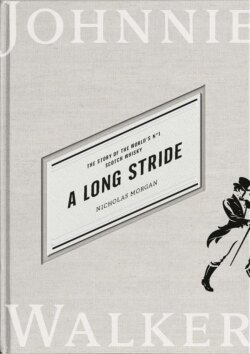Читать книгу: «The Caxtons: A Family Picture — Volume 06

CHAPTER VII. I now make a long stride in my narrative. I am domesticated with the Trevanions. A very short conversation with the statesman sufficed to ...
Реклама. ООО «ЛитРес», ИНН: 7719571260, erid: 2VfnxyNkZrY.
Читать книгу: «Jane Eyre / Джейн Эйр», страница 5

A long stride measured the schoolroom, and presently beside Miss Temple, who herself had risen, stood the same black column which had frowned on me so ...
Реклама. ООО «ЛитРес», ИНН: 7719571260, erid: 2VfnxyNkZrY.
Читать книгу: «The Portrait of a Lady — Volume 1

From the Roman past to Isabel Archer's future was a long stride, but her imagination had taken it in a single flight and now hovered in slow circles over the ...
Реклама. ООО «ЛитРес», ИНН: 7719571260, erid: 2VfnxyNkZrY.
-
Читать онлайн «Prince of Scandal», Annie West
 Купить
КупитьРеклама. ООО «ЛитРес», ИНН: 7719571260, erid: 2VfnxyNkZrY.
Читать книгу: «The Sandman», страница 3
 Купить
КупитьРеклама. ООО «ЛитРес», ИНН: 7719571260, erid: 2VfnxyNkZrY.
Читать онлайн «The Adventures of Sherlock Holmes
 Купить
КупитьРеклама. ООО «ЛитРес», ИНН: 7719571260, erid: 2VfnxyNkZrY.
Читать онлайн «King's Wrath», Fiona McIntosh
 Купить
КупитьРеклама. ООО «ЛитРес», ИНН: 7719571260, erid: 2VfnxyNkZrY.
Читать онлайн «Libertionne», Anna Tishchenko
 Купить
КупитьРеклама. ООО «ЛитРес», ИНН: 7719571260, erid: 2VfnxyNkZrY.
Читать онлайн «Rebel with a Heart», Carol Arens
 Купить
КупитьРеклама. ООО «ЛитРес», ИНН: 7719571260, erid: 2VfnxyNkZrY.
Читать книгу: «From Venice With Love», страница 3
 Купить
КупитьРеклама. ООО «ЛитРес», ИНН: 7719571260, erid: 2VfnxyNkZrY.
Для формирования результатов поиска книг использованы различные сервисы поисковых систем.
Выше вы можете купить бумажную и электронную версию книги дешево и по самой лучшей цене в известных интернет-магазинах Лабиринт, Читай-Город, Буквоед, МИФ, Озон, book24, Литрес. Книги можно купить со значительными скидками!
